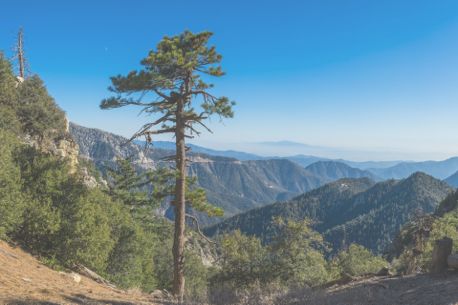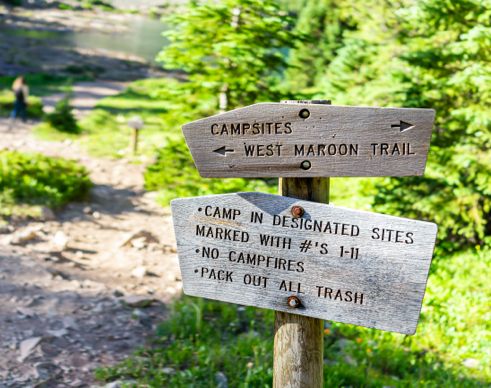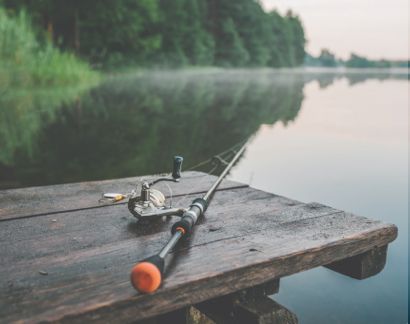The Uinta-Wasatch-Cache National Forest spans 2.2 million acres across Northern Utah and southwestern Wyoming and attracts around 9 million visitors annually, making it one of the most visited in the U.S. Situated where urban areas meet the wilderness, it offers year-round access for outdoor enthusiasts. Visitors can enjoy the serene backcountry experiences and picturesque vistas, with fresh water and clean air throughout. In winter, the famous “Greatest Snow on Earth” draws skiers and snowboarders from across the globe.
The best time to visit is during the summer (June to September) when hiking trails and campgrounds are accessible, though winter months (December to March) also offer excellent skiing opportunities. Popular sites include the picturesque Mirror Lake, the trail to Mount Timpanogos, and the pristine Provo River. There are several comfortable places to stay nearby, including campgrounds and cabin rentals, and for RV campers, RV Share offers convenient RV rental options for your trip
Camping in Uinta-Wasatch-Cache National Forest | Wyoming
Uinta-Wasatch-Cache National Forest features numerous RV-friendly campgrounds with modern amenities and beautiful views. Explore BLM sites for additional camping options near the forest, and use platforms like RVshare to find nearby dump stations for a smooth camping experience.
Campgrounds in Uinta-Wasatch-Cache National Forest
Fees not mentioned
Fees not mentioned
Fees not mentioned
Fees not mentioned
Fees not mentioned
Private Campgrounds Near Uinta-Wasatch-Cache National Forest
You can also consider booking a spot at one of the top campgrounds near Uinta-Wasatch-Cache National Forest. Many of these sites offer convenient amenities such as Wi-Fi, and full hookups, making your RV camping experience even more enjoyable.
Campgrounds by Lakes/Rivers for Fishing and Water Activities
Fees not mentioned
Fees not mentioned
Fees not mentioned

Uinta-Wasatch-Cache National Forest | Wyoming Hiking Trails
Discover the variety of hiking trails in Uinta-Wasatch-Cache National Forest, offering everything from leisurely strolls to more demanding adventures.
Easy Hikes for Beginners
Distance: 1.84 miles
Difficulty: Easy to moderate
Distance: 1.9 miles
Difficulty: Moderate
Distance: 4.5 miles
Difficulty: Moderate
Challenging Trails for Hikers
Distance: 3.7 miles
Difficulty: Hard
Distance: 4.5 miles
Difficulty: Hard
Distance: 3.5 miles
Difficulty: Hard
Lakeside Trails
Distance: 3.4 miles
Difficulty: Moderate
Distance: 5.2 miles
Difficulty: Hard
Distance: 3.3 miles
Difficulty: Easy

-
Kabell Lake Trail
The Kabell Lake Trail is an in-and-out pathway that elevates 1,500 feet over a long distance. Most of the hike is a gradual climb through open pine forests that is briefly interrupted with mountain meadows. The incline increases at two locations but never reaches a 5% grade. The lake is shallow and full of hungry fish.
Length: 10.7 miles
Intensity: Intermediate
-
Hesse Lake Trail
The Hesse Lake Trail is an in-and-out pathway that travels due south from March Lake Campground. The trail is well-maintained with a gradual climb that elevates you 1,500 feet over its entire length. The views from the lake at the end of the hike make the walk worthwhile.
Length: 16 miles
Intensity: Intermediate
-
Lily Lake Trail
The Lily Lake Trail gradually elevates from the trailhead to the lake. It is an in-and-out trail with a few sections that are rocky but easy to negotiate. The lake, full of lily pads with a mountain hovering in the background, is a beautiful sight.
Length: 3 miles
Intensity: Intermediate
-
Tokewanna Peak Trail
The Tokewanna Peak Trail is an in-and-out pathway that elevates 4,500 feet to get to amazing views from the peak of a mountain. The trail begins in a river valley, which it follows to its source. The climb is gradual along this part of the path. The last two miles elevate 2,000 feet. This portion of the trail is more of a scramble along a rocky way with erratic boulders that must be climbed.
Length: 20.9 miles
Intensity: Difficult
-
Scow Lake Trail
The Scow Lake Trail demands a high level of trail-finding skills. It was the victim of a fire in 2002, and, due to the high elevations, the trees have not yet grown to shade-producing height. The trail is an in-and-out pathway that elevates 1,400 feet over 3 miles. Interruptions to the climb include a marshy valley and a section where old cabins used by miners still stand.
Length: 6.5 miles
Intensity: Difficult
Activities in Uinta-Wasatch-Cache National Forest | Wyoming
Here are some of the best things to do in Uinta-Wasatch-Cache National Forest:
The forest’s streams, rivers, lakes, and reservoirs teem with fish such as Bonneville and Colorado River cutthroat trout, brown trout, brook trout, golden rainbow trout, and grayling. Warm-water species include largemouth and smallmouth bass, tiger muskie, catfish, bluegill, crappie, and more.
Boating in Uinta-Wasatch-Cache National Forest offers serene lakes and picturesque reservoirs perfect for kayaking, canoeing, and paddleboarding. Popular spots like Mirror Lake and Jordanelle Reservoir provide ideal settings for peaceful exploration or adventurous water recreation amidst stunning alpine scenery.
The district buzzes with activities from May to September, especially on weekends. Visitors enjoy swimming at Middle Inlet, Quist Beach, Anderson Cove, etc.
With hundreds of miles of trails, Uinta-Wasatch-Cache National Forest welcomes all levels of mountain bikers. Most hiking trails and roads permit bikes but note they are not allowed in designated wilderness areas.
The Uinta-Wasatch-Cache National Forest is ideal for picnicking, offering spaces to barbecue, relax, and immerse in nature. While some districts lack designated picnic areas, visitors can enjoy traditional picnics on blankets or use tables available within campgrounds.

-
Identifying Flora and Fauna

Flora and fauna in the Uinta-Wasatch-Cache National Forest have been changing over the last 100 years of its existence. Changes occurred early in its history due to human intervention. Later, subtle climate changes have encouraged the growth of invasive plants and the encroachment of animals in the lower elevations of the forest not previously found in the area. Wandering cattle and sheep are competing with deer, moose, and mountain goats for the limited amount of food, and the upper reaches have seen fires limiting the growth of natural habitats.
Though cattle and sheep free grazing on the lower elevations of the Uinta-Wasatch-Cache National Forest compete with the natural wildlife, the upper elevations see widespread populations of elk, mule deer, white-tailed deer, moose, mountain goats, and bighorn sheep. Forest fires impacted these populations, but the USFS reports an upsurge in populations after a brief drop.
-
Fishing

Anglers find excellent sport in the Uinta-Wasatch-Cache National Forest. Lakes in the higher elevations are seldom visited, and the fish are hungry, often jumping from the water to grab a fly. Streams and rivers offer a mixture of fish species, including several trout species, bass, muskie, bluegill, crappie, and others.
-
Geocaching

While geocaching is welcomed in the forest's lower reaches, expect to be denied permission to plant a prize in the higher elevations. Most of these places are within the borders of wilderness areas where geocaching is not allowed. Check out the nearest headquarters of the Uinta-Wasatch-Cache National Forest for information on where geocaching is restricted inside the forest.
-
Stargazing

Stargazing in the Uinta-Wasatch-Cache National Forest is an engaging activity that draws thousands from nearby cities where light pollution blocks the view of the skies. Visitors bring their kids here for their first looks at a clear night sky, pointing out constellations and the bright road called the Milky Way.
How to get to Uinta-Wasatch-Cache National Forest | Wyoming
Address:
Fee: Entry fee $0
By Car
From Salt Lake City, Utah: The Uinta-Wasatch-Cache National Forest is approximately a 1-hour drive. Take I-80 east toward Park City, then follow signs to forest access points like Mirror Lake Highway or Big Cottonwood Canyon.
From Evanston, Wyoming: About 30 minutes away. Drive south on Highway 150 to reach the forest's stunning Mirror Lake Scenic Byway.
By Air
The nearest airports to Uinta-Wasatch-Cache National Forest are:
Salt Lake City International Airport (SLC): Located about 30 miles from the forest, this airport provides several domestic and international flight options.
Evanston-Uinta County Airport (EVW): A smaller regional airport, roughly 10 miles away, offering limited flight services.
Seasonal Restrictions
Seasonal restrictions in Uinta-Wasatch-Cache National Forest include snow-covered roads in winter, limiting access to some trails and areas. Certain campgrounds, roads, and facilities close during winter months, while others require snowmobiles or skis for entry. Always check before you make your plans.
Fees in the Uinta-Wasatch-Cache National Forest
Fees in Uinta-Wasatch-Cache National Forest vary by activity and site. Campgrounds, day-use areas, and recreation sites often charge fees, while some trails require permits. Annual passes are available for frequent visitors.
Frequently Asked Questions About Uinta-Wasatch-Cache National Forest | Wyoming
Is Uinta-Wasatch-Cache National Forest | Wyoming open all year round?
Yes, the Uinta-Wasatch-Cache National Forest Wyoming is open year-round. In summer, there is hiking, mountain biking, paddling, and horseback riding. In winter, you can cross-country ski, snowshoe, snowmobile, and more.
What type of wildlife lives in Uinta-Wasatch-Cache National Forest | Wyoming?
Wildlife living in Uinta Wasatch Cache National Forest Wyoming includes black bears, mountain lions, rattlesnakes, and moose. There are many birds in the forest as well, along with fish in the forest lakes and streams.
How many hiking trails does Uinta-Wasatch-Cache National Forest | Wyoming have?
There are more than 1,700 miles of hiking trails in Uinta Wasatch Cache National Forest. There are trails for every level of hiker, from beginner to expert. Whether you want a quick walk, or a long trek, you're sure to find something here!
What is the best time to visit Uinta-Wasatch-Cache National Forest | Wyoming?
April through August is the best time to visit Uinta Wasatch Cache National Forest Wyoming. The wildflowers are in bloom and blanket the forest floor, and the weather is warm for hiking, paddling, and swimming.
Is there a fee to get into Uinta-Wasatch-Cache National Forest | Wyoming?
No, there is no fee to get into Uinta Wasatch Cache National Forest Wyoming. However, there may be fees for certain day-use areas within the forest. There may also be permits or fees required for some recreational activities in the forest as well.






